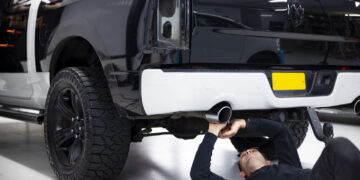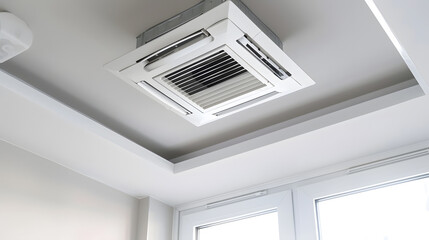Indoor air quality is important to maintain a healthy lifestyle or work atmosphere. As new structures are constructed in airtight configurations to conserve energy, demand has risen for methods of maintaining adequate fresh air. The heat recovery ventilation system automatically runs and works by drawing stale air out of the house and replacing it with fresh air from the outside while at the same time recovering the heat from the exhaust.
How does heat recovery ventilation work?
Initially, HRV works by bringing in fresh air from outside and at the same time dispensing with used indoor air. Unlike conventional ventilation equipment, HRVs transfer heat from one air stream to another with a heat exchanger, so that the incoming fresh air may be heated (in winter) or cooled (in summer). This significantly cuts down the energy lost due to ventilation, hence it’s an energy-efficient alternative.
By exhausting contaminants away from the home and reducing moisture and odor build-up, it reverses and prevents condensation inside the home to eliminate the impact of moisture issues and mold growth. Especially in very well-sealed new buildings, HRV systems are necessary to keep the occupants supplied with steady flows of clean, temperate air, while at the same time not wasting the heating or cooling energy that this airstream has had added to it.
Advantages of an HRV system
There are other advantages to installing HRV beyond better home air quality. As they continuously transfer air, HRVs diminish indoor contaminants like volatile organic compounds (VOCs), dust mites, or allergens. This can be especially beneficial if you have respiratory problems or allergies.
Another major advantage is saving on your electric bill. Since the system reclaims heat from the air being exhausted, heating and cooling requirements are reduced, which means a lower utility bill. They also contribute to the building’s durability by managing humidity levels, reducing moisture-related damage, and increasing the longevity of building materials.
Considerations when using pieces effectively
For optimal performance of heat recovery ventilation, the quality of its installation and maintenance is very important. HRV vent location ought to accommodate free airflow throughout the building, while filters require periodic cleaning or replacement in order to capitalize on efficiency and air quality.
Although more expensive in the short term, the energy savings, comfort, and health benefits of an HRV system generally make it a worthwhile investment. For buildings in very hot climates or where exterior humidity levels are high, heat recovery ventilation can provide great benefit at reduced energy costs.
Conclusion
HRV provides a good and sustainable way of improving indoor air quality while saving on energy, too. By controlling air exchange precisely and capturing heat from exhaust air, the HRV system helps indoor areas stay comfortable, healthy, and affordable to maintain. With a growing awareness of indoor air quality, heat recovery ventilation is becoming an essential implementation in new and refurbished buildings.
Justin Mack is author of the article. For more details about furnace service in Ottawa please visit our website: airzonehvac.ca






















